India & World UpdatesBreaking NewsFeature Story
Changes in our vocabulary made by COVID-19; Positive really means Negative!

Oct. 8: When researchers on one hand are busy finding a vaccine for COVID-19, the common people on the other are faced with the increasing amount of complicated terminology that has developed, seemingly overnight, around the coronavirus outbreak. The Oxford English Dictionary (OED) in one its blogs wrote, “Some of the terms with which we have become so familiar over the past few months have been around for years, but they have achieved new and much wider usage to describe the situation in which we currently find ourselves.” In short, the spread of the disease has correspondingly ushered in a new vocabulary to the general populace.
 The word ‘Positive’ indeed had capacity to emit positive feelings among humankind in a world which had not experienced the arrival of COVID-19. But for the populace of the post-COVID world, the word ‘positive’ definitely gives rise to negative thoughts when the term is used in the form ‘COVID-19 Positive.’ Not only the adults, but even the children of the pandemic era have got a eerie feeling when they now come across the word ‘positive.’ A Facebook post by a person from Maharashtra in August would help us to assess the situation. The post stated, “Today I tested negative for coronavirus. I am so happy. Thank you God! I am feeling very positive today.” In a similar note, a person detected ‘COVID-19 positive’ would indeed be gripped by negativity!
The word ‘Positive’ indeed had capacity to emit positive feelings among humankind in a world which had not experienced the arrival of COVID-19. But for the populace of the post-COVID world, the word ‘positive’ definitely gives rise to negative thoughts when the term is used in the form ‘COVID-19 Positive.’ Not only the adults, but even the children of the pandemic era have got a eerie feeling when they now come across the word ‘positive.’ A Facebook post by a person from Maharashtra in August would help us to assess the situation. The post stated, “Today I tested negative for coronavirus. I am so happy. Thank you God! I am feeling very positive today.” In a similar note, a person detected ‘COVID-19 positive’ would indeed be gripped by negativity!
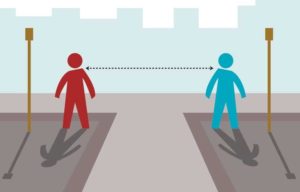 Fables and story books often had morals written beneath them in bold letters, “Reach out to others, save lives.” But the pandemic taught us, “Stay home, Save lives.” Not only the words, but the world also witnessed a lot of conceptual change during the pandemic. Here goes an age old adage- “People are lonely because they build walls instead of bridges.” But Covid has now reversed it and taught us ‘social distancing.’ A tiny virus has tutored us to get physically isolated from all kith and kin. There are many who say that social distancing isn’t the appropriate term since people can be socially connected even virtually and through telephones. Physical distancing could have been more appropriate. Nonetheless, social distancing is the trending word.
Fables and story books often had morals written beneath them in bold letters, “Reach out to others, save lives.” But the pandemic taught us, “Stay home, Save lives.” Not only the words, but the world also witnessed a lot of conceptual change during the pandemic. Here goes an age old adage- “People are lonely because they build walls instead of bridges.” But Covid has now reversed it and taught us ‘social distancing.’ A tiny virus has tutored us to get physically isolated from all kith and kin. There are many who say that social distancing isn’t the appropriate term since people can be socially connected even virtually and through telephones. Physical distancing could have been more appropriate. Nonetheless, social distancing is the trending word.
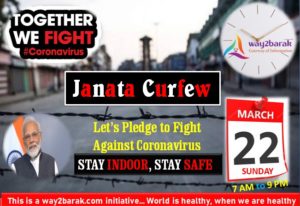 Come March, 2020, the world was caught unaware of the term ‘pandemic‘. COVID-19 was declared a pandemic by the WHO in early March. Pandemic is a worldwide spread of an infectious disease, with larger reach than an epidemic. Until COVID-19, the last pandemic was the H1N1 influenza outbreak in 2009. It was then, especially the Indians suddenly heard a phrase ‘Janata Curfew‘ uttered by our Prime Minister Narendra Modi. He said, “The 14-hour ‘Janta Curfew’ is the beginning of a long battle against coronavirus outbreak.” At the call of the Prime Minister, the nation remained indoors on 22 March, during the self-imposed curfew or Janata Curfew. It was a stage rehearsal for the mega lockdown that was to follow soon.
Come March, 2020, the world was caught unaware of the term ‘pandemic‘. COVID-19 was declared a pandemic by the WHO in early March. Pandemic is a worldwide spread of an infectious disease, with larger reach than an epidemic. Until COVID-19, the last pandemic was the H1N1 influenza outbreak in 2009. It was then, especially the Indians suddenly heard a phrase ‘Janata Curfew‘ uttered by our Prime Minister Narendra Modi. He said, “The 14-hour ‘Janta Curfew’ is the beginning of a long battle against coronavirus outbreak.” At the call of the Prime Minister, the nation remained indoors on 22 March, during the self-imposed curfew or Janata Curfew. It was a stage rehearsal for the mega lockdown that was to follow soon.
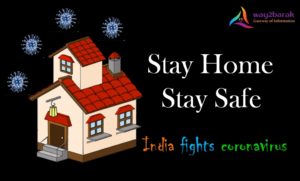 On 24 March 2020, the Government of India under Prime Minister Narendra Modi ordered a nationwide lockdown for 21 days, limiting movement of the entire 1.3 billion population of India as a preventive measure against the COVID-19 pandemic in India. ‘Lockdown‘ was then not properly understood by many in India. This is an emergency situation, usually imposed by an authority, when it is considered that a person is safer within his home, building or area. There are restrictions on movements beyond certain areas. But look, just after 7 months, now every child can explain in clear terms the connotation of lockdown.
On 24 March 2020, the Government of India under Prime Minister Narendra Modi ordered a nationwide lockdown for 21 days, limiting movement of the entire 1.3 billion population of India as a preventive measure against the COVID-19 pandemic in India. ‘Lockdown‘ was then not properly understood by many in India. This is an emergency situation, usually imposed by an authority, when it is considered that a person is safer within his home, building or area. There are restrictions on movements beyond certain areas. But look, just after 7 months, now every child can explain in clear terms the connotation of lockdown.
When all television channels, print & digital media were busy announcing the number of ‘symptomatic‘ and ‘asymptomatic‘ cases of COVID-19, many wondered, what these two terms meant. Asymptomatic refers to a patient who is a carrier of an illness but does not show symptoms. People are thought to be most contagious for COVID-19 when they are most symptomatic, although researchers are still investigating how its spread might be possible at other times, including during the incubation period (called “pre-symptomatic transmission”) and even after symptoms have resolved.
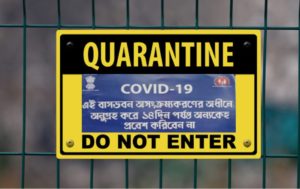 Then came one of the most used word ‘quarantine.’ Now this was indeed a heavy term to fathom at that period of time. The process of isolating people who are asymptomatic, but might be in the “window period”. This would mean that although they are not manifesting any signs of sickness, they may be carriers of the virus. A quarantine is isolating such people for a specific duration, during which either the infection might manifest itself and they can go into treatment and isolation, or there may be no infection at all. After quarantine, the person can join the normal population without fear of spreading contagion.
Then came one of the most used word ‘quarantine.’ Now this was indeed a heavy term to fathom at that period of time. The process of isolating people who are asymptomatic, but might be in the “window period”. This would mean that although they are not manifesting any signs of sickness, they may be carriers of the virus. A quarantine is isolating such people for a specific duration, during which either the infection might manifest itself and they can go into treatment and isolation, or there may be no infection at all. After quarantine, the person can join the normal population without fear of spreading contagion.
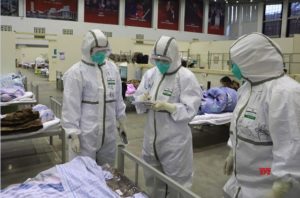 With lockdown in place, companies directed its employees to start working from their homes. The Oxford English Dictionary (OED) in one its blogs wrote, “While WFH (working from home) dates from 1995 as mentioned previously, the abbreviation was known to very few before it became a way of life for so many of us. PPE is now almost universally recognized as personal protective (or protection) equipment—an abbreviation dating from 1977 but formerly probably restricted to healthcare and emergency professionals. The full phrase – personal protective equipment – dates from as far back as 1934.”
With lockdown in place, companies directed its employees to start working from their homes. The Oxford English Dictionary (OED) in one its blogs wrote, “While WFH (working from home) dates from 1995 as mentioned previously, the abbreviation was known to very few before it became a way of life for so many of us. PPE is now almost universally recognized as personal protective (or protection) equipment—an abbreviation dating from 1977 but formerly probably restricted to healthcare and emergency professionals. The full phrase – personal protective equipment – dates from as far back as 1934.”
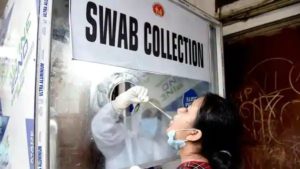 Many equipment like thermal guns used to test body temperature; pulse oximeter to check the oxygen level also became household names. People by the time became familiar with COVID Test (RT-PCR) popularly known as swab test. But as the number of COVID cases increased, then came the Rapid Antigen Test (RAT).
Many equipment like thermal guns used to test body temperature; pulse oximeter to check the oxygen level also became household names. People by the time became familiar with COVID Test (RT-PCR) popularly known as swab test. But as the number of COVID cases increased, then came the Rapid Antigen Test (RAT).
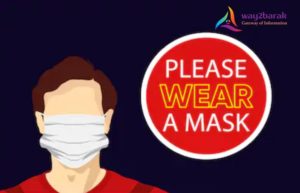 The post-pandemic world has now been characterised by hand hygiene and respiratory hygiene. It’s very difficult to assume at this point of time as to how long these hygienic measures will be continued. Hand hygiene is a key strategy for slowing the spread for COVID-19. Washing hands with soap and water for at least 20 seconds is one of the most important steps to take to protect against COVID-19 and many other diseases. Now, when we are in Unlock stage, use of hand sanitisers has taken the place of washing hands frequently with soap. Respiratory hygiene encompasses some of the basic etiquette, including covering the face with a tissue of kerchief while coughing. In today’s fraught time, it means to compulsorily put on face masks when we step out of our house.
The post-pandemic world has now been characterised by hand hygiene and respiratory hygiene. It’s very difficult to assume at this point of time as to how long these hygienic measures will be continued. Hand hygiene is a key strategy for slowing the spread for COVID-19. Washing hands with soap and water for at least 20 seconds is one of the most important steps to take to protect against COVID-19 and many other diseases. Now, when we are in Unlock stage, use of hand sanitisers has taken the place of washing hands frequently with soap. Respiratory hygiene encompasses some of the basic etiquette, including covering the face with a tissue of kerchief while coughing. In today’s fraught time, it means to compulsorily put on face masks when we step out of our house.
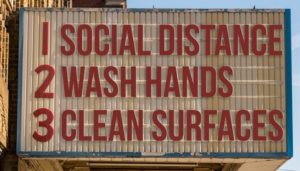 ‘Flattening the curve‘ is another phrase of this new era. This is the ideal towards which all administrations and agencies are working. All epidemic outbreaks can be projected on a graph sheet as a sinusoid. It has a stage of exponential rise, and then the numbers begin to decline. Flattening the curve is the attempt to stem the exponential growth. Healthcare facilities, handwashing and social distancing are all attempts at flattening the curve.
‘Flattening the curve‘ is another phrase of this new era. This is the ideal towards which all administrations and agencies are working. All epidemic outbreaks can be projected on a graph sheet as a sinusoid. It has a stage of exponential rise, and then the numbers begin to decline. Flattening the curve is the attempt to stem the exponential growth. Healthcare facilities, handwashing and social distancing are all attempts at flattening the curve.
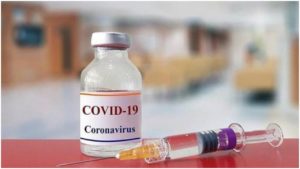
Finally, the silver lining amidst the enveloping darkness is a ‘vaccine’ that the entire world is awaiting with much eagerness. A vaccine triggers the immune system to help it build immunity to a disease. The immune system already has the capacity to react to diseases by producing substances called antibodies that remain in the body to fight them in the future. According to a report, nine experimental COVID-19 vaccines in various stages of clinical testing are part of the WHO’s COVAX global vaccine facility that aims to distribute 2 billion doses by the end of 2021. A total of 172 countries have joined the WHO’s COVAX initiative.
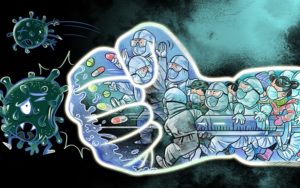 World Health Organization (WHO) director-general Tedros Adhanom Ghebreyesus on Tuesday said that a vaccine against coronavirus (COVID-19) may be ready by year-end. The comments from the WHO chief came even as drug-makers and scientists all over the world are racing against time to develop a safe, effective vaccine against COVID-19. Mankind can only hope for a successful vaccine at the earliest so that the list of complicated terminology that has developed overnight might not expand further and the world becomes ‘normal’ once again.
World Health Organization (WHO) director-general Tedros Adhanom Ghebreyesus on Tuesday said that a vaccine against coronavirus (COVID-19) may be ready by year-end. The comments from the WHO chief came even as drug-makers and scientists all over the world are racing against time to develop a safe, effective vaccine against COVID-19. Mankind can only hope for a successful vaccine at the earliest so that the list of complicated terminology that has developed overnight might not expand further and the world becomes ‘normal’ once again.




